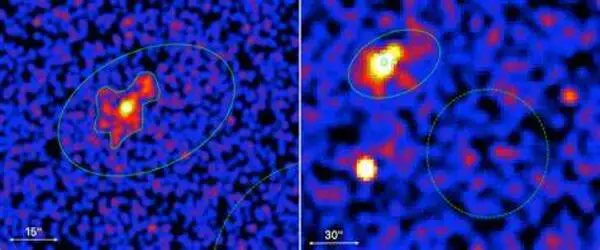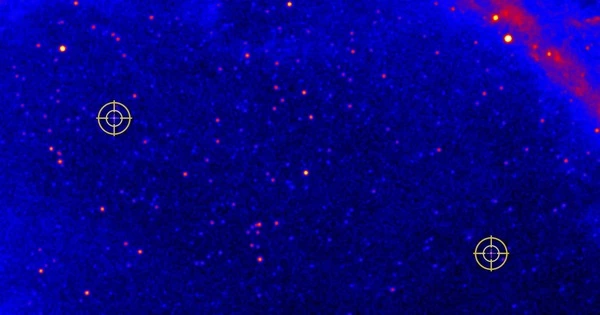Nearly 300 gamma ray pulsars have been discovered, according to scientists. In their Third Catalog of Gamma Ray Pulsars, the United States Naval Research Laboratory (NRL) and the international Fermi Large Area Telescope Collaboration announce the discovery of nearly 300 gamma ray pulsars. This achievement comes 15 years after Fermi’s launch in 2008, when there were fewer than ten known gamma-ray pulsars.
“Work on this important catalog has been going on in our group for years,” said Paul Ray, Ph.D., head of the High Energy Astrophysics and Applications Section at NRL. “Our scientists and postdocs have been able to both discover and analyze the timing behavior and spectra of many of these newfound pulsars as part of our quest to further our understanding of these exotic stars that we are able to use as cosmic clocks.”
Pulsars form when massive stars run out of fuel and become unable to resist the inward pull of their own gravity. The star collapses into a dense, spinning magnetized neutron star as a result. Their spinning magnetic fields emit gamma-ray beams, the most energetic form of light. The highly sensitive Fermi gamma-ray telescope can detect periodic pulses of energy as these beams sweep across the Earth. Fermi has transformed the field of pulsar research with over 15 years of data.
Work on this important catalog has been going on in our group for years. Our scientists and postdocs have been able to both discover and analyze the timing behavior and spectra of many of these newfound pulsars as part of our quest to further our understanding of these exotic stars that we are able to use as cosmic clocks.
Paul Ray
“We have been very excited about how many millisecond pulsars (MSPs) we have been able to detect using these gamma rays,” said Matthew Kerr, Ph.D., an NRL astrophysicist. “We are able to study these objects that began as young pulsars in a binary system. Like a spinning top, they eventually slowed down and became inert. Over the past hundreds of millions of years, their binary companions dumped matter on to them, causing their speed to increase again, very dramatically and far faster than before, “recycling” these pulsars into MSPs. These high speed MSPs are now some of Nature’s most precise timekeepers.”
These cosmic clocks have been used by scientists in experiments known as Pulsar Timing Arrays. Scientists have discovered ripples in spacetime by looking for tiny differences in the times at which pulses arrive. These ripples, known as gravitational waves, are created when extremely massive objects, such as pulsars, accelerate rapidly. Extremely powerful gravitational wave sources point to a cataclysmic collision of dense, compact objects like neutron stars and black holes.
Recently, several pulsar timing array collaborations, including several NRL researchers, published the first compelling evidence for very low-frequency gravitational waves, likely from the merger of supermassive black holes. “These are such exciting results,” said Thankful Cromartie, Ph.D., a National Research Council Research Associate at NRL. “These low frequency gravitational waves allow us to peer into the centers of massive galaxies and better understand how they were formed.”

The pulsar timing array results have important practical applications as well. The spacetime distortions set a limit on how precisely we can use pulsars for critical navigation and timing. In pulsar-based navigation, these spinning pulsars play much the same role as GPS satellites do, but we are able to use them far beyond the Earth’s orbit. “Now we know where that ultimate stability limit is,” said Dr. Ray.
Using Fermi’s gamma ray detection abilities has an impact on pulsar timing array work as well. “Previously, once we found an MSP we had to hand it off to radio astronomers to monitor with huge telescopes,” Dr. Kerr said. “We discovered that Fermi is sensitive enough on its own to constrain these gravitational waves, and unlike radio waves, which bend like light in a prism as they travel to Earth, gamma rays shoot straight to us.” This reduces the possibility of systemic errors in measurements.”
For Megan DeCesar, Ph.D., a George Mason University scientist working at NRL, the most intriguing aspect of the new work in the dramatic increase of “spider” pulsars. “Spider pulsars are named after arachnids that eat their smaller mates,” DeCesar said. “Something similar can happen when a neutron star and its binary companion are very close to each other and the MSP “recycling” process gets a little carried away. The intense radiation and particle wind from the pulsar eats away at the surface of the other star, resulting in a puffball of evaporated material.”
When compared to radio observations, Fermi is especially adept at detecting these “spiders” because radio waves are frequently eclipsed as the pulsar beam passes the remnants of the companion star. Gamma rays, on the other hand, can pass right through. “While it may be that spider systems are also intrinsically brighter in gamma rays, studying them will help us to understand their origins and the bonanza of discoveries we have made with Fermi,” he said.





